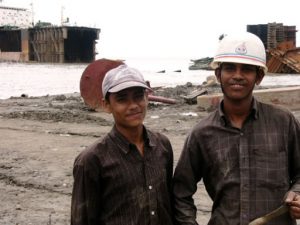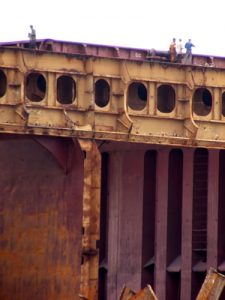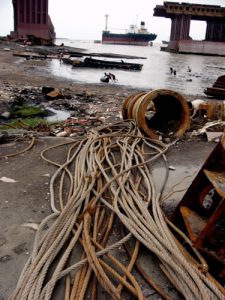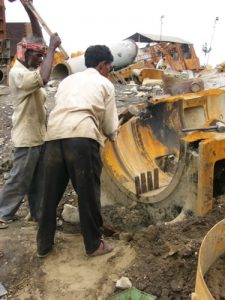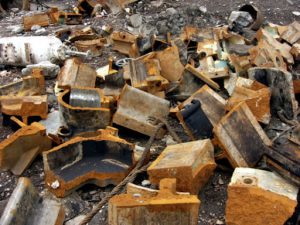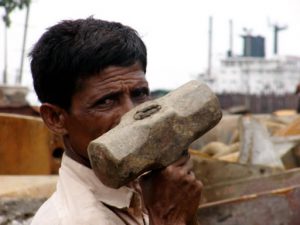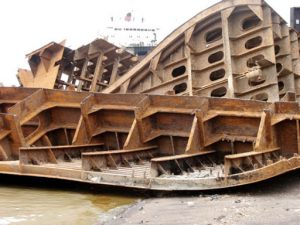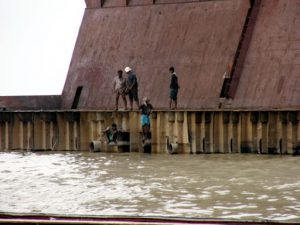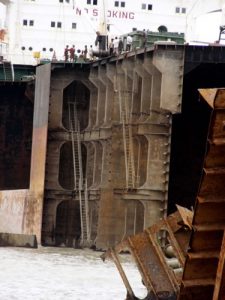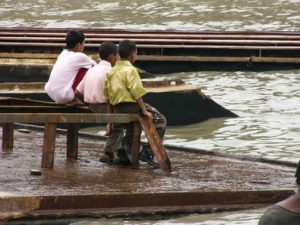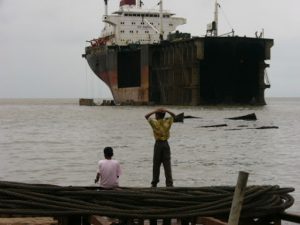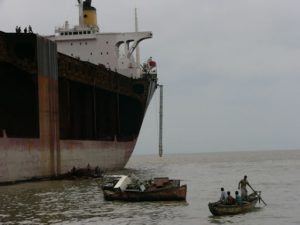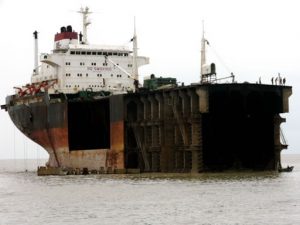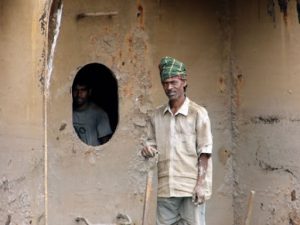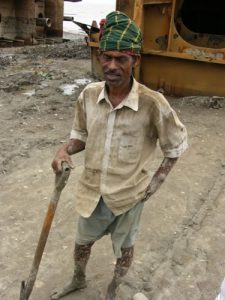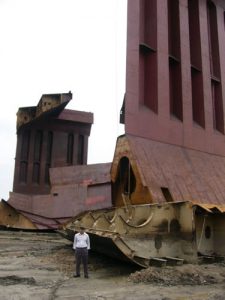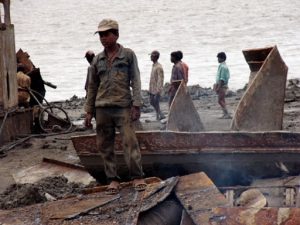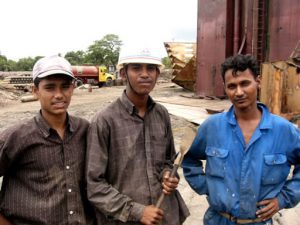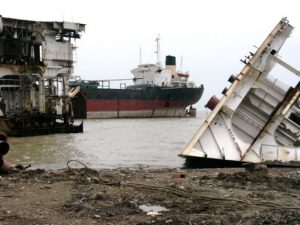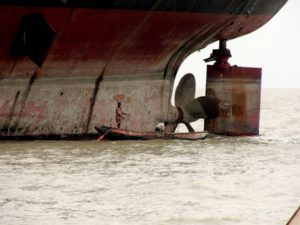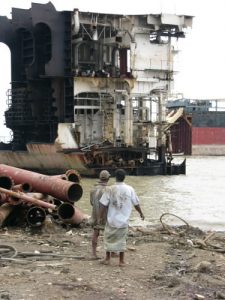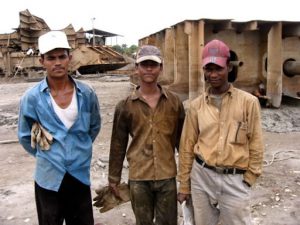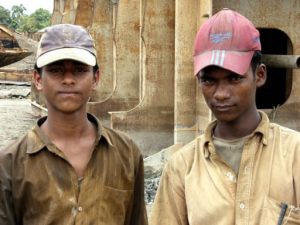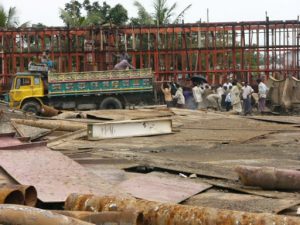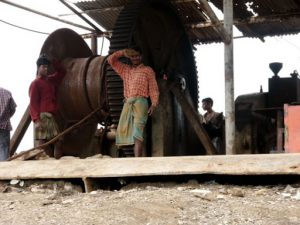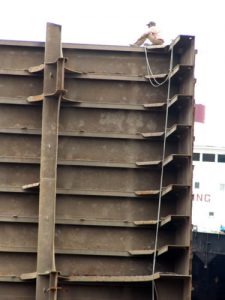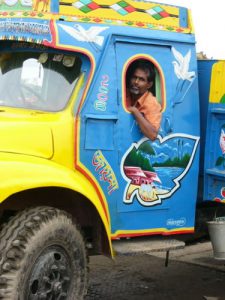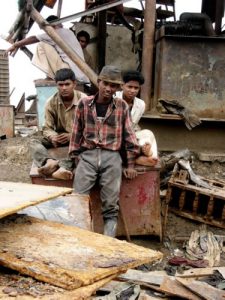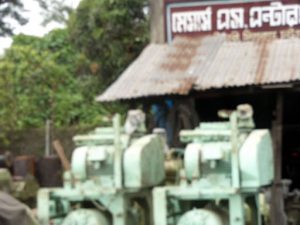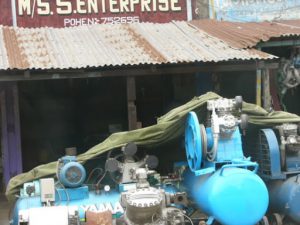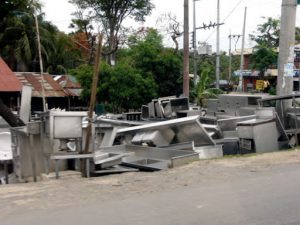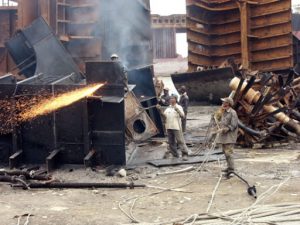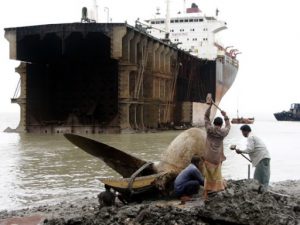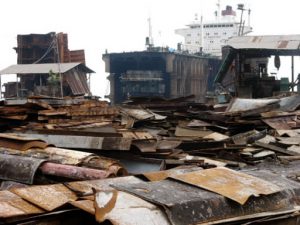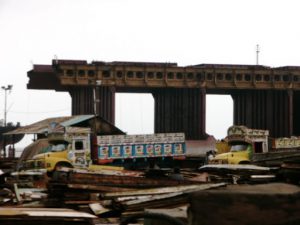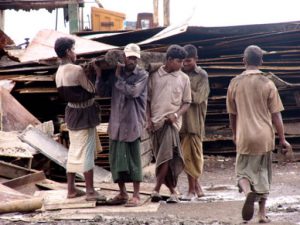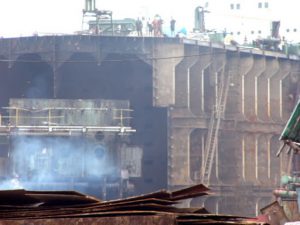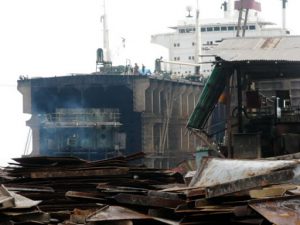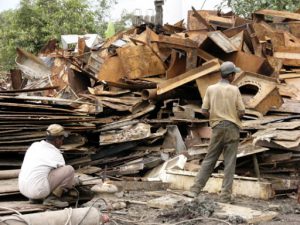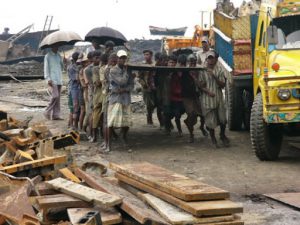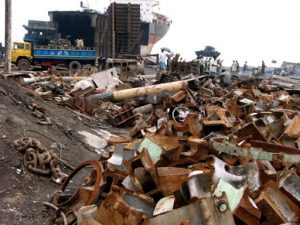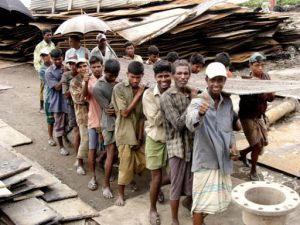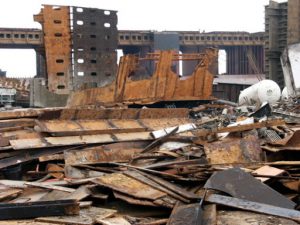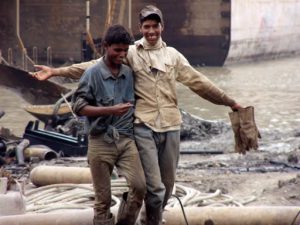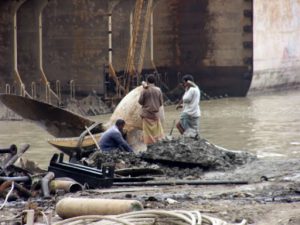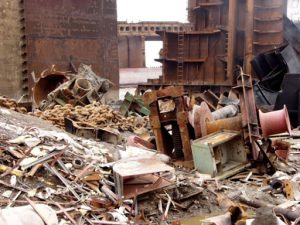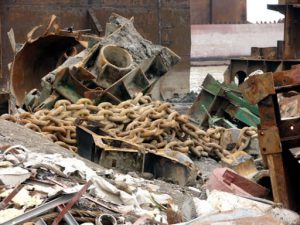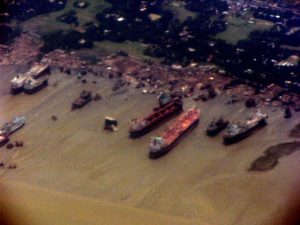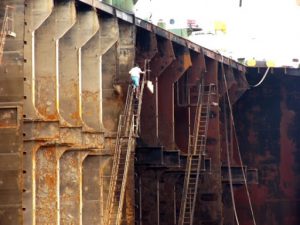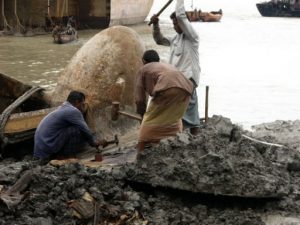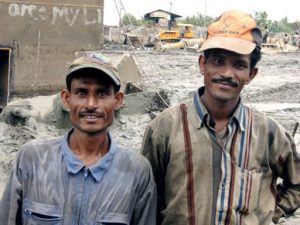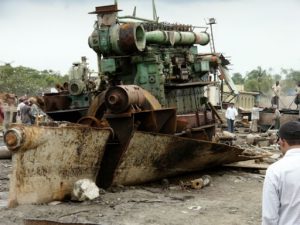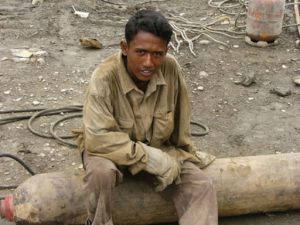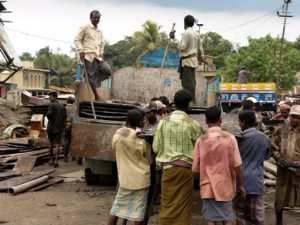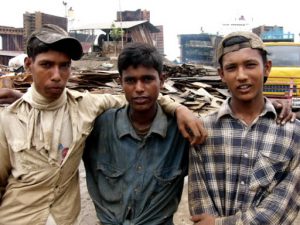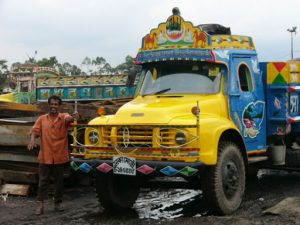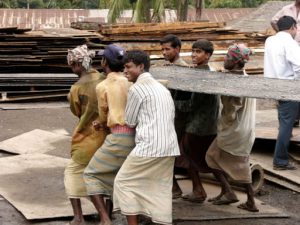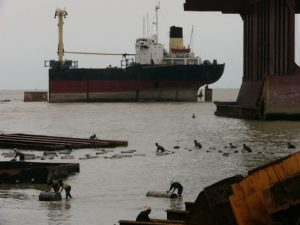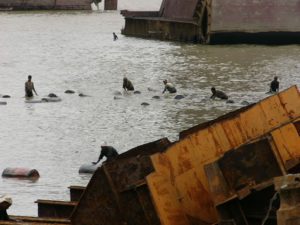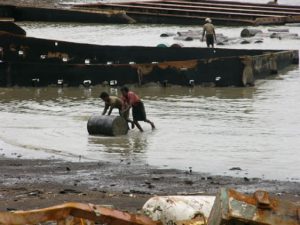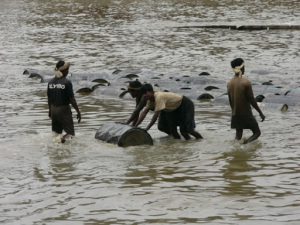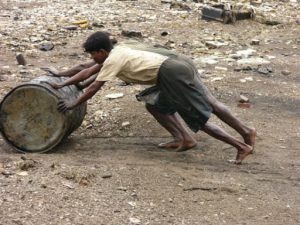Along the southeast coast of Bangladesh is the Mohsin ship breaking yard where immense ocean freighters and tankers are torn apart by hundreds of gritty, lean, strong, bronze-skinned, men–by manual labor.
Using blow torches, sledgehammers and wedges they carve the mammouth steel whales into chunks just off shore.
After the huge pieces crash into the water like glaciers calving, they are winched onto shore where they are cut up into bite-size pieces weighing hundreds of pounds then lifted and hand-loaded by teams of guys who sing in rhythm as they walk lock-step carrying the very heavy inch-thick steel plates onto trucks to be sold (very profitably by the owners who live in huge mansions in town) as scrap metal across the country and Asia (with some reworked locally into ‘new’ ships).
Also pictured here is the breaking up a 7′ long 10″ thick bronze propeller blade (entire 3-blade propeller is about 15′ in diameter) using only sledgehammers, chisels and wedges. Ship breaking is done from 7 AM to 11 PM (same crew) with two half-hour breaks and an hour for lunch (supper is eaten after they go home at 11); 14 hours a day, 6-1/2 days a week (off half day Friday for religious observations). They are paid $1.25 per day.
Also see Atlantic Monthly 2002
CBS 60 Minutes special on shipbreaking in Chittagong
The following commentary was sent to GlobalGayz.com by a reader with experience in toxic waste:
I was an engineer and spent years getting these materials removed (very carefully) and they went to a special land fill site for disposal. Buried very very deep. The PCBs went to a special incinerator. (They were used in electrical switch gear and transformers) It all cost an arm and a leg. The point I wanted to make to you is, it’s best to keep away from these sites. In theory one fibre of asbestos can cause cancer. You can even bring it home with you and contaminate your family. If you have any clothes from your holiday I recomment you dispose of them right away. In fact chuck everything away you can. Carefully clean all your gear, cameras, footwear, etc. It’s best if you don’t go near these places. Lung cancer is incureable and a very nasty way to die. It’s best not to go anywhere near any third world industries unless you have taken advice first from someone who knows.
You can be absolutely certain asbestos was present in those ships and equally certain it was not being disposed of properly, and the air would be full of the dust, it would disperse for miles with the wind and is totally indestructable, ie it can kill forever.You only know you’ve got it several years after exposure. I am not being alarmist, this is no joke. Up until the 1960’s asbestos was widely used for everything from pipe insulation to brakes and clutches in cars. When it was realised just how dangerous it is substitutes were found but there’s still millions of tons of the stuff out there.
For more information read ‘The Shipbreakers’: http://www.ilo.org/public/english/dialogue/sector/papers/shpbreak/index.htm
Also see: William Langewiesche’s ‘The Outlaw Sea’: http://books.guardian.co.uk/reviews/politicsphilosophyandsociety/0,,1701595,00.html
Other shipbreaking stories from BBC: April 1999; March 2004; April 2005; February 2006
———-
FIDH began investigating the general working condition at shipbreaking yards in Bangladesh and India in 20021. In 2005, YPSA, Greenpeace and FIDH published
a joint report focusing on dead and injured workers2. With Childbreaking Yards, FIDH and YPSA portray child labour at Chittagong’s shipbreaking yards.3
When we conducted field investigations in 2000, 2002 and 2005, we repeatedly noticed children among the workers involved in shipbreaking activities.

